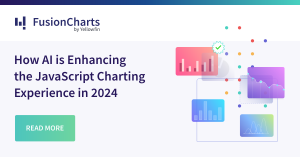Web developers have some common pitfalls they need to look out for, especially when they try to compile a larger data set into a single graph. Even with powerful charting tools, it is still easy to make small mistakes with bigger consequences. Data charts can be complex can in this article we will explore things to avoid.
Here’s how you can prevent mistakes in your own chart summaries.
Table of Contents
What are 5 things to avoid when editing charts and graphs?
1. Are you assuming a trend exists in the data?
If you decide to show statistics on your site, you might be tempted to see patterns on your plotted graph, just because the data seems to fit. Unfortunately, this is an example of confirmation bias, where you’ve already drawn a conclusion before getting all the facts. The resulting visualization will also mislead your viewers, especially since visual information is easy-to-digest. As a result, they likely won’t notice the subtle discrepancy. If you are uncertain of a pattern, it’s safer to estimate the relationship between two variables than to discuss exact values.2. Are you manipulating data to produce favorable outcomes?
Charting solutions make it easy to look closely at any part of your data. You can also change the scope by zooming in or out on the axes. For instance, you could distort the perception of a company’s monthly revenue to show better performance by focusing only on a short period. Although your data is accurate, it may not align with the overall trend, which may suggest a decline or temporary rise in revenue. It is also easy to distort the interpretation of data by not beginning at the origin or using a narrow range for the Y-axis. To avoid this, give your audience the ability to zoom. That way they have a broader perspective to draw their own conclusions.3. Are you overloading information in a single visualization?
Squeezing too much data into a single chart is more of a design issue. Whatever the cause, however, people will be overwhelmed or confused even if you label your points clearly. When your blocks become compressed, it makes them hard to read. It is much more effective to communicate data by separating it into multiple graphs. For example, you can arrange a long list of values into broader categories. Another option is to use numbers and labels that scale relative to the webpage. If you don’t, they may appear blurry on different screens. That said, go easy. You don’t want too many charts covering your dashboard. Your viewers will get lost in the details and miss the big picture.4. Are you forgetting to label maps with numbers or percentages?
Interactive maps use shaded regions to represent areas, be they towns, states, or entire countries. When you are preparing your map templates it’s easy to get distracted and forget to label the units of each colored area. Formatting the data is just as important as having accurate measurements. Without a clear key, your users will have a hard time making sense of the relative values for each location. The point is don’t force your users to guess demographic percentages based on color alone. You could lead them to assume a correlation that’s simply not true.5. Are you straying too far from standard conventions?
Sometimes, you may be tempted to use a 3D chart or one that rotates in space. But going overboard on aesthetics is not always a good idea, despite its design appeal. In most cases, like bar graphs and pie charts, a 2D chart is preferable because it separates the x-axis values and doesn’t appear tilted. As a rule of thumb, when you plot a best-fit curve of scattered data, avoid tacking on extraneous points or extreme outliers onto your chart. You should also remember that each chart has a distinct purpose: a drill-down provides a closer look at descendant values while a bar graph compares the results of two variables.What are the advantages of using an open-source charting library?
Many companies rely on dynamic charts to represent collections of data. Their goal is to obtain insights into their performance and gauge consumer interest. They use data visualization methods to translate key values into insightful predictions. The best way to apply these methods is an open-source charting library. While you’ve probably come across all kinds of unique chart templates, with a good library you only need to set up one API solution to get your site. There are many benefits to investing in a great library:- Customizing the layout of chart templates
- Modifying your charts using multiple JavaScript libraries
- Supporting many chart types from time series to trendlines
- Exporting charts as image files or dynamic elements
- Revealing performance indicators and the objective results
- Justifying your claims with consistent visual information



